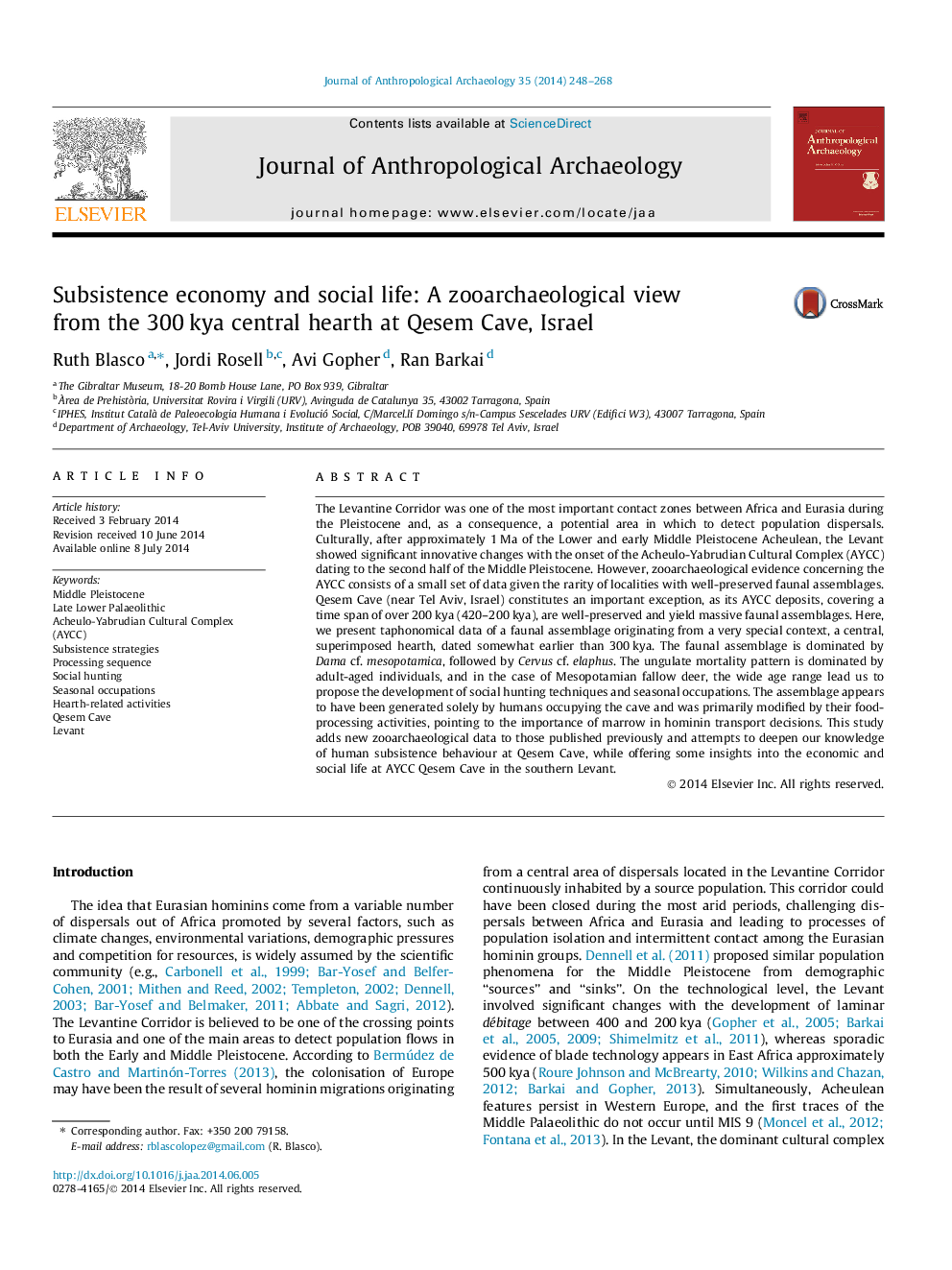| Article ID | Journal | Published Year | Pages | File Type |
|---|---|---|---|---|
| 1034969 | Journal of Anthropological Archaeology | 2014 | 21 Pages |
•The Levant is a key place to explore the links between technological innovation and subsistence strategies.•Qesem Cave shows AYCC deposits with well-preserved fauna covering a span of 420–200 kya.•We present new taphonomic data from a central and superimposed hearth dated to 300 kya.•Qesem faunal assemblage shows the importance of marrow in hominin transport decisions.•Seasonal occupations and social hunting techniques were developed at Qesem 300 kya.
The Levantine Corridor was one of the most important contact zones between Africa and Eurasia during the Pleistocene and, as a consequence, a potential area in which to detect population dispersals. Culturally, after approximately 1 Ma of the Lower and early Middle Pleistocene Acheulean, the Levant showed significant innovative changes with the onset of the Acheulo-Yabrudian Cultural Complex (AYCC) dating to the second half of the Middle Pleistocene. However, zooarchaeological evidence concerning the AYCC consists of a small set of data given the rarity of localities with well-preserved faunal assemblages. Qesem Cave (near Tel Aviv, Israel) constitutes an important exception, as its AYCC deposits, covering a time span of over 200 kya (420–200 kya), are well-preserved and yield massive faunal assemblages. Here, we present taphonomical data of a faunal assemblage originating from a very special context, a central, superimposed hearth, dated somewhat earlier than 300 kya. The faunal assemblage is dominated by Dama cf. mesopotamica, followed by Cervus cf. elaphus. The ungulate mortality pattern is dominated by adult-aged individuals, and in the case of Mesopotamian fallow deer, the wide age range lead us to propose the development of social hunting techniques and seasonal occupations. The assemblage appears to have been generated solely by humans occupying the cave and was primarily modified by their food-processing activities, pointing to the importance of marrow in hominin transport decisions. This study adds new zooarchaeological data to those published previously and attempts to deepen our knowledge of human subsistence behaviour at Qesem Cave, while offering some insights into the economic and social life at AYCC Qesem Cave in the southern Levant.
